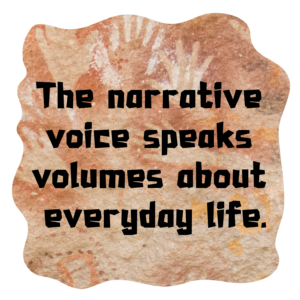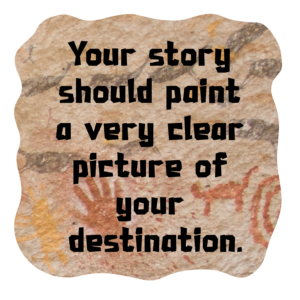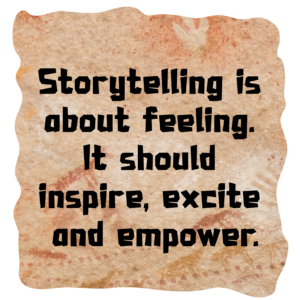Picture this: the Chauvet Caves. The South of France. 30,000 BCE. (Best read in the voice of Sophia from The Golden Girls.)
The Chauvet Caves contain some of the best-preserved figurative cave paintings in the world. These paintings show details of everyday life, an unspoken and unwritten form of communication showing encounters with mammoths, lions, and rhinos.
Jump forward to 1,000 BCE and Ancient Greek myths and legends are being shared as part of an oral tradition. The Ancient Greeks were the first known civilisation to develop writing and apply it to storytelling, which they did in messages and poems.
From 200 BCE until the seventeenth century, we see stories being used to persuade – the Bible being the most well-known example.
The first newspaper was produced in 1690; the snappily-titled Publick Occurrences Both Foreign and Domestic. Shortly after that, in 1704, the first Boston Newsletter was created, called The Statute of Anne. Whoever Anne was…
And, of course, since then we’ve seen the invention of radio, television and so on.
But why am I telling you all this? 
There’s a reason why storytelling has become so engrained in our culture. Words – and stories – have the power to unite people.
In a business context, a story ensures that everyone is aligned behind the same purpose, the same strategy, the same direction.
But how? Through emotion.
Facts and figures are useful, but the truth is that messages tied up in stories are 22 times more memorable, and it’s no wonder. We like to think we’re rational, factual human beings – but we’re not. 98% of the decisions we make are emotional. So only communicating in factual, rational ways at work is failing to acknowledge the emotional side of things.
Whatever you call it – storytelling or strategic narrative – the purpose is the same: to bring everyone with us on the journey, painting a very clear picture of the destination we’re headed towards.
So how do you do it?
A good strategic narrative needs a good strategy! You cannot create a narrative in the absence of a strategy. – Simon Monger
Keep it simple
You story does not need to be Game of Thrones. In fact, the simpler you can keep it, the better. It will be easier to remember.
Follow a story arc 
Think of your favourite book, or play, or film. Chances are, there’s a beginning, a middle with some kind of obstacle to overcome, and then an end where the protagonist triumphs and lives happily ever after. Or something like that. Think the same way about your corporate narrative. What’s the destination? That’s your ending. Why do you need to change? What’s the consequence of not changing? That’s your obstacle. And where are you now? That’s the beginning.
Connect your people
They may forget the words you say, but they’ll never forget the way the story makes them feel. It should inspire, excite, and empower. Your narrative needs to be owned by everyone – change fails when people feel done to. Involve them in the story, your journey, and you’ll keep them engaged.

Be honest
The current reality you paint needs to be accurate, and the aspiration realistic – albeit stretching. If your people don’t relate to what they’re seeing, they’ll switch off.
Use everyday language, not corporate speak
Your story should effectively be your elevator pitch – easy to recite at high level and still capture the main points.
Support your leaders
The story is only as good as the way it’s told. When your leaders articulate the narrative, does it ring true for them? Is it relatable? Help your leaders to bring their own stories and experience to bear when explaining the narrative to their teams.
Show what it will feel like to succeed
Self-realisation may seem a bit wishy-washy to some, but if you can make that destination tangible and feel real, you’re already halfway there.
According to McKinsey, 71% of all transformations fail. Ensuring you have a strong story, which engages and excites your people, will contribute significantly to helping your organisation to be with the other 29%.
By Simon Monger for Alive!
Biography 
Simon Monger, SCMP® is an internal communications, change and engagement consultant, and President of the International Association of Business Communicators (IABC) UK & Ireland chapter for the 2022/23 Board year. Since 2007, Simon has worked with a diverse range of global and multinational organisations in 19 countries across three continents, including IKEA, Deloitte, Transport for London, and E.ON UK.
















